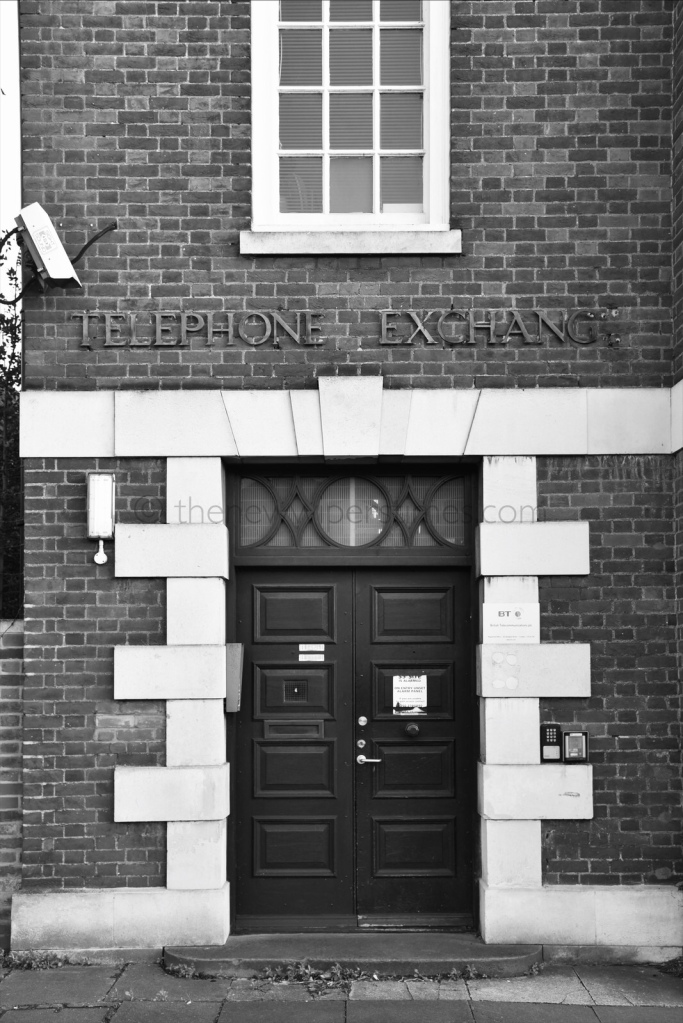Having recently written about the ‘Palmers Green Telephone Exchange’ on nearby Bourne Hill, N.13., I felt it appropriate to continue the theme with a piece on the ‘Winchmore Hill Telephone Exchange’.

Standing on Green Lanes, N.21, at the junction with Firs Lane, the new exchange was developed by the General Post Office (G.P.O.) in the mid-1930’s and was once again designed by H. M. Office of Works from their offices on Storeys Gate, S.W.1.
Whilst the date stone on the building identifies it as being from 1936, the new exchange was not completed until 1938, with operations commencing at 01.30 p.m. on 28th March that year.

With the natural exchange number of 946 (WIN) having already been ascribed to the ‘Wimbledon Telephone Exchange’ (WIM) in south London, Winchmore Hill was given the name “Laburnum”, in a practice that was increasingly common across later exchanges, where number combinations were unavailable.
The new exchange was built to service an area of two square miles, with telephone subscribers having previously been served by exchanges in both Enfield and Palmers Green.
Unlike at Palmers Green, however, Winchmore Hill opened as an entirely automatic exchange, the equipment for which was manufactured by Siemens Brothers & Co., with the ultimate capacity for 10,000 subscriber lines.

Despite the difference in age between the two north London buildings, they are still remarkably similar in appearance, both adhering to a broader architectural style adopted by the Office of Works, which we would now describe as ‘Neo-Georgian’. Traditional materials were employed, with the building once again finished in red brick with stone dressings.
Originally built as a two-storey building with a flat roof, ‘Winchmore Hill Telephone Exchange’ was extended post-war, with an additional attic storey added and the building extended along Firs Lane. Whilst the later additions looked to match the original design, they lack its architectural detailing, with the attic storey windows looking particularly clunky.
The pre-war element of the site retains its original wooden sash windows, however, which remain in excellent condition, whilst the main wooden entrance doors on Green Lanes are also still in situ, complete with period signage above.

The exchange is not a listed building, nor has it been included on Enfield’s Council’s Local Heritage List, meaning that it remains at risk of further alterations. The most obvious risk is the replacement of the original windows with uPVC alternatives, as has already taken place at Palmers Green, however no such plans currently exist.
January, 2020.